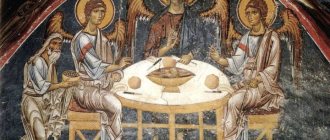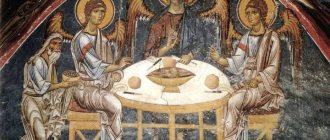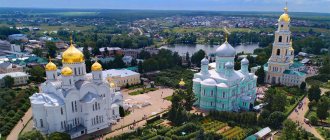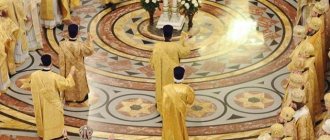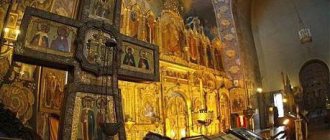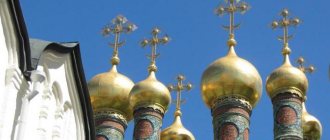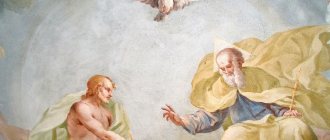The Holy Land has many ancient sites associated with something important and significant. In the very center of Jerusalem lies Mount Zion, a historically significant site for the Jewish people. It is also revered by Christians and Muslims, because it is sacred to any believer and an object of pilgrimage.
History of Mount Zion
Even during the time of King David, the oldest inhabitants of Jerusalem lived on the hills of the Judean mountains. After the city was captured by soldiers of the Western Roman Empire, it was divided into two parts - Lower and Upper. The latter eventually became almost forgotten until Jesus Christ held the Last Supper in this place and later ascended to heaven.
After this, Christians gave this part of Jerusalem the name Zion, and soon the first Jewish community appeared in it.
First mentions
The very first information about the historical place is mentioned in the 10th century BC. According to the second book of the Kingdom, the oldest settlement was under the control of the Jebusites. They built a fortress and called it Zion.
Later it was captured by King David, and the place began to be called the “City of David.” The rocks of Mount Zion served as the burial place for King David and Solomon, as well as their descendants.
Middle Ages
After the collapse of the Western Roman Empire, the city of Jerusalem became part of the Eastern Empire, where Constantinople was the capital. At that time, Byzantium had a strong Christian faith, so it became completely Christianized.
However, in the 7th century, Jerusalem was captured by Muslims, but Europe did not put up with this. European rulers believed that Christian shrines should not belong to Muslim conquerors. Since then, the era of the Crusades began, and Mount Zion several times belonged to European knights.
Further fate
Visible from afar, the hill, whose height is 765 m above sea level, is surrounded by valleys and the Zion Gate. They lead to the historical center. They were erected during the reign of Suleiman the Great. They opened only during the daytime and helped stop the enemy.
In subsequent years, monasteries and temples were built here, which became shrines of three religions - Christianity, Islam, Judaism.
The city, geographically located between two seas, was often attacked by the enemy and destroyed. Local residents were repeatedly driven out by the conquerors. However, they always sought to return, and again built settlements. Mountains and hills became a special place for them and a symbol of their faith.
Current situation
Today, Mount Zion in Jerusalem is a holy place, as it has been for two decades. She is revered by Jews, Christians and Muslims all over the world. Each of them has its own shrines on the hill. Now it, like the valley, is completely built up. In addition to the ancient ones, there are also modern buildings.
On the map, the mountain borders the oldest part of the city, which is divided into several blocks:
- Christian;
- Muslim;
- Jewish;
- Armenian.
Franciscan Catholic monastery
Believers from different countries dream of getting to Mount Zion in Jerusalem, since it contains places revered by Jews, Christians and Muslims. Here is the Catholic monastery of the Holy Land, on the wall of which there is a statue of St. Francis holding the Jerusalem cross in his hands. Previously, the sculpture was a symbol of the Crusaders, and now it is a monastic order appointed by the Vatican.
Mount Zion as a symbol of Jerusalem
The majestic hill became a symbol not only of Jerusalem, but of all of Israel. Today it can be seen from afar, and very often it is the hallmark of an ancient city. It is customary to depict it on souvenirs and postcards. This is one of the most revered shrines for three faiths.
It is a religious landmark located in the Southwestern part of the Old City. In the Bible it is often referred to by various names - “the city of David”, “the royal city of God”, “the habitation and house of God”. For this reason, pilgrims and tourists always come here to visit their father's house after a long journey.
Switzerland
Finally, I would like to talk about the consonant name of the mountain - the city of Sion in Switzerland. In this situation, apparently such a name can easily speak of the greatness of the place to which it is given.
It is worth clarifying that Swiss Zion has nothing to do with the mountain. This small settlement, which is famous for its rich and significant history, was a kind of bridge that connected trade routes between France and Italy.
But this is not all the amazing features of this place. Since ancient times, a large number of beautiful castles have been preserved, which have survived remarkably well and attract with their mystery. Tourists are attracted by the tranquility and uniqueness of the streets and landscapes of the city. The place is filled with mysteries and secrets, which will allow you to become part of these historical unknowns.
If you want to see something amazing and impressive, then you should definitely visit one of the places listed above. History, religion, faith and beauty - all this will be combined in one place. You will be able to walk through prayerful and faith-filled streets, look at ancient buildings, and touch our religious formation, try to delve into the differences between different faiths and nationalities, and also find out the differences between Jerusalem and Swiss Zion.
We also recommend:
- Distance from Tel Aviv to Eilat - transport between resorts
- Capernaum - the city of miracles
- Miraculous water. Place of baptism of Jesus Christ
Location of the shrine
In ancient times, the fortress and the Upper City were called Zion (Zion). The hill is across the road from it and also next to the Temple Mount. A gate was erected at the very top. The path to holy places begins from them. From the northern part, the mountain is fenced by the southern wall of old Jerusalem with a gate. On the eastern side by the Tirleon Valley, and on the South and West by the Ginnoma Valley.
How to get there
Any local resident of the ancient city will always tell you where it is and how to get to Zion. The most convenient way to get there is by bus No. 38, 20 to the Jaffa Gate, and also No. 1 and 2 to the Garbage Gate. Specially organizes trips. Having arrived at the place, pilgrims then continue on foot to the main gate.
Elijah - the greatest prophet of the Old Testament
Prophet Elijah
After his great victory, Elijah was very depressed due to persecution by Jezebel. He fled, fearing for his life, to Mount Sinai (Horeb).
(1 Kings 19:8-9) And he arose, ate and drank, and, refreshed with that food, he walked forty days and forty nights to the mountain of God, Horeb. And he entered a cave there and spent the night in it. And behold, the word of the Lord came to him, and the Lord
: What are you here, Elijah?
If you remember the other prophets, God never asked them: “What are you doing here?”
God asked Elijah directly. Elijah had to give an answer that would satisfy God. However, he could not find any excuse for himself. He should not have been on Mount Sinai. Elijah went to this mountain because of his depression.
This is a lesson we need to learn.
When we feel overwhelmed, we have a tendency to revert to legalism, relying on our own human efforts. And this is wrong.
“What are you doing here, relying on your strength again? You look at Me as the One who constantly demands. But, I am God who gives life abundantly.”
God is asking many of you, “What are you doing here? Why do you see God in Me, who demands and demands, and does not help you in any way?”
Parable of the Talents
One of the servants buried his talent (coin). Then the servant said to his master, “I know that you are a cruel man.”
(Matthew 25:24-25) The one who had received one talent came up and said: Master! I knew you that you were a cruel man, reaping where you did not sow, and gathering where you did not scatter, and, being afraid, I went and hid your talent in the ground; here's yours.
Your perception of the Lord will lead to you not being a good steward, not serving Him. You will hide what He has given you and you will even hide from Him yourself. This happens when the spirit of slavery, the spirit of legalism (Phariseism) appears in us.
Shrines of the mountain
The most significant places of the famous hill, mentioned more than once in the Bible, include only a few famous buildings. These highly revered shrines are closely connected with religion.
The religious complex includes:
- the upper room of the Last Supper;
- King David's tomb;
- Catholic Church of St. Petra;
- Assumption Benedictine Monastery.
They always make up the program of any believer or simple tourist who comes to Israel. Considered a must visit.
Zion Upper Room
This is the very place where Christ and the apostles had his last meal. According to the New Testament, it was here that the first communion (Eucharist) in history took place. The disciples performed it symbolically, partaking of wine and bread as the blood and flesh of Christ. Here, after 7 weeks on the feast of Pentecost, the Holy Spirit descended on the Mother of God and the apostles. After a short time, they set off to travel around the world and began to preach the Gospel, the word of God.
The Latin word for room is “caenaculum” or refectory. The first floor is occupied by a synagogue with the tomb of King David, which is still in use today. Above, during the time of the Crusaders, a church was built in the 12th century. It has been perfectly preserved to this day.
In architecture, the trends that became traditional for the Gothic of those times are clearly visible:
- lancet windows;
- a large number of internal columns;
- cross-shaped arches of the vaults.
Over the course of thousands of years, the upper room was repeatedly destroyed and rebuilt. The last time construction work was carried out by the crusaders. Entrance to the Upper Room of Zion is free and free.
Church of the Assumption of the Blessed Virgin Mary
The Catholic Church of the Assumption of Our Lady is located 100 m from the gate. In the era of the New Testament, the house of Christ’s disciple, John the Theologian, stood on this site. Jesus bequeathed that the Mother of God should live out her last days in him. She died at the age of 72. In 414, instead of a house, the Byzantines built a basilica and called it Holy Zion.
It repeated the fate of numerous Christian churches in Israel. It was destroyed and rebuilt many times. After the next construction, the Muslims again turned the structure into ruins. The modern temple is quite young, since it began to be built only in the last century.
The main shrine of the religious building is considered to be a stone in an underground crypt. The Mother of God ended her earthly days there. It is covered with a sarcophagus, where there is a sculpture made of wood. The hands and face of the Mother of God are made of ivory, and she looks quite young, despite her advanced age. The dome of the crypt is decorated with six mosaic medallions. The current church was previously called a monastery, but since 1988 it received the status of the Catholic Church of the Assumption of the Virgin Mary.
Monastery of the Savior
On the right side of the gate, the Armenian monastery of the Holy Savior was built. From early Byzantine legends it is known that the dwelling of the high priest Caiaphas was located on this site.
The patriarchs are buried in the inner monastery courtyard. Visiting the tombs is only possible as part of a specially organized excursion program. This is a whole religious complex, decorated with blue ceramics. Local craftsmen worked hard on its design.
St. Peter's Church
The eastern slope of the Hill of Zion is decorated with the Roman Catholic Church of St. Peter in Gallicantu. According to legend, it was at this place that the Apostle Peter mourned his denial of Jesus Christ. The created religious monument was dedicated to the repentance of the saint.
Galliantu is Latin for "rooster crowing". The iconic dome of the temple is decorated with a bird that announces the coming of a new day. Part of the church is carved into the rock. The basement is located in the cave where Jesus was kept. For this reason, the temple became world famous.
Tomb of King David, the authenticity of which has not been proven
According to the bold assumptions of historians, on the sacred Mount Zion in Jerusalem, photos of which excite the hearts of believers from all over the world, there is the tomb of King David. True, many researchers believe that his remains are kept in Bethlehem, and it is this fact that is mentioned in the Bible. Despite all the doubts about its authenticity, the tomb is considered one of the most revered shrines.
It is installed next to the ruins of numerous synagogues. The conquerors built temples on this site, and new invaders destroyed them and built their own. The last religious monument is the mosque, which stood for more than seven centuries. Christians and Jews were denied access here, and only 70 years ago the shrine received its first visitors.
The meaning of Zion in religion
For people all over the world and all religions, this place is considered holy. For centuries now, the mountain has served as the main site of pilgrimage. It is mentioned many times in the Bible under different names, for example, geographically - the Temple Mount, Ophel Hill or the City of David.
For two thousand years, the peak has been a holy place for Christians, Muslims and Jews from all over the world, a must-see. Like the city itself, this area is imbued with prayers and has a special atmosphere. It is considered not only a symbol, but also the soul of Jerusalem, which lives according to its own religious laws.
In Christianity
The Bible mentions Mount Zion more than 150 times. The prophets often called it the Kingdom of God in heaven and earth. King David placed the Ark of the Covenant on it. In a figurative sense, he designated the place of revelation of the glory of God. There he appears in His glory. Christians have always treated the hill as a shrine, because it was here that the Holy Spirit descended on the apostles.
It is believed that at the top of the hill, Christ, after his second coming, will restore the Garden of Eden, which Adam and Eve lost.
In Judaism
“The Royal City of God” is the figurative name of Jerusalem on earth and in heaven. The entire line of Israelites originated on the Hill of Zion, so it is believed that this is the homeland of the Jews.
The city was often attacked, and the Jewish people were expelled from their land. The Jews scattered all over the world. For them, Zion became holy and a symbol of faith, where every Jew dreams of returning. The old part of Jerusalem has become its soul and a historically great place.
In other religions
Prophet Muhammad mentioned Jerusalem many times in his sayings. Al-Aqsa Mosque is the third most important mosque for Muslims, despite the fact that the main mosque, the Dome of the Rock, is located in the city. The name of the historical building of Islam is often found in the Koran.
According to Muslim beliefs, from the place where the temple stood, Muhammad ascended to heaven. It became a sanctuary and then acquired religious significance.
The main stronghold in religion for Armenians is the Monastery of the Holy Savior. It has a boys' school, an orphanage and a library. According to Christian tradition, it was built on the burial site of the Apostle James. This is one of the most revered religious monuments of Armenian architecture. The temple is the main one for the Jerusalem Patriarchate of the Armenian Apostolic Church.
The only building in the world created taking into account different faiths
A building appeared that was built taking into account the relationships of different faiths and became a center of pilgrimage for hundreds of thousands of people. This is the only building in the world with a synagogue on the ground floor, a church on the second, and an ancient mosque on the roof. Inside it, in the main hall, is kept a draped sarcophagus, which, according to legend, is the tomb of the second king of Israel - the most striking biblical figure.
Here is also the Zion Upper Room, where Christ appeared before his disciples after the miraculous Resurrection, and the Holy Spirit descended on the apostles.
Opportunities to visit the holy mountain
Every year, about 3 million tourists and pilgrims from all over the world visit the holy hill.
To explore all the shrines, you need to know the opening hours:
- Tomb of David - in summer from 8:00 to 20:00 from Saturday to Thursday, on holidays until 14:00;
- in winter from 8:00 until sunset, from Sunday to Thursday until 14:00;
- Upper Room of the Last Supper - in summer from 8:00 from Sunday to Thursday 16:00, on Friday until 14:00, on Saturday until 17:00:
- in winter from Sunday to Thursday until 15:00, on Friday until 13:00,
- Monastery of the Holy Virgin Mary - daily from 8:30 to 18:00, break from 11:30 to 12:45, on Saturday until 17:30, on Sunday from 10:30 to 17:30.
Visiting is free for everyone.
Interesting facts about the holy place
On a towering peak in the center of the city is the grave of German industrialist Oskar Schindler. This is a famous and respected person for all Jews. Thanks to him, about 1,000 Jews were saved during the Holocaust. A museum was erected nearby in memory of those killed during the Second World War.
Recently, archaeologists managed to excavate a stone staircase. Local residents have walked along its steps for more than a thousand years. Fragments remain on it, reminding visitors of the antiquity of this area.
In the Church of the Assumption of the Blessed Virgin Mary, on the ancient mosaic floor you can find the names of the prophets and seraphim of the doxology, as well as see the signs of the zodiac.
Tourists have the opportunity to visit the museum built in honor of the Israeli sculptor D. Palombo. It is dedicated to his life and work as a world-famous master of abstraction.
All the author’s compositions are made from different materials:
- metal;
- stone;
- wood.
Visitors will find many interesting and unusual works of art.
City authorities have never officially raised the issue of passing a law defining the sacred status of the biblical hill. This historical landmark always makes you want to visit it. It attracts believers and travelers who have a desire to visit a mysterious place that still conceals many unsolved mysteries.
Church of the Assumption of Our Lady
A hundred meters from the gate is the Church of the Assumption of the Blessed Virgin Mary on Mount Zion. Belonging to the German Catholic Abbey of Dormition, it appeared at the beginning of the last century on the very spot where the house of John the Evangelist stood. Until 1988, the religious monument was called a monastery. The Catholic Church considers this place the Dormition of the Virgin Mary, who spent her earthly years with the Apostle, and from here she was escorted on her last journey.
Initially, there was a small synagogue here, which was completely destroyed by invaders in the 5th century. A Byzantine basilica was built on its ruins, but it has not survived. Many temples built by the Persians and Turks did not reach their descendants, but the majestic church has delighted the eyes of believers for more than a hundred years. The complex of modern buildings appeared in 1910, and its architecture has features of Muslim and Byzantine styles, which is quite unusual.
The interior decoration is amazing: the walls and floor, on which you can see symbolic images of three rings with the names of the prophets and zodiac signs, are decorated with colored mosaics. The temple is proud of its crypt, which houses the sacred stone. In the central part of the underground structure there are six altars decorated with black ebony and snow-white ivory, and also a sculpture of the Virgin Mary reclining on a stone.
